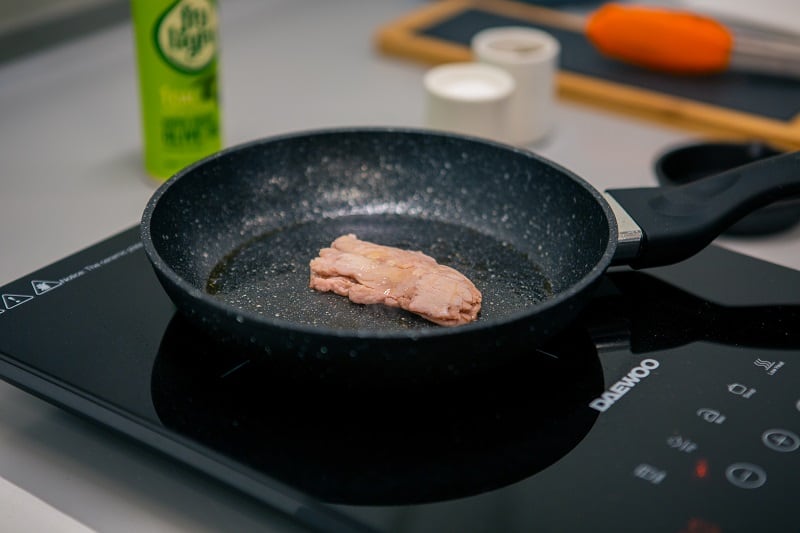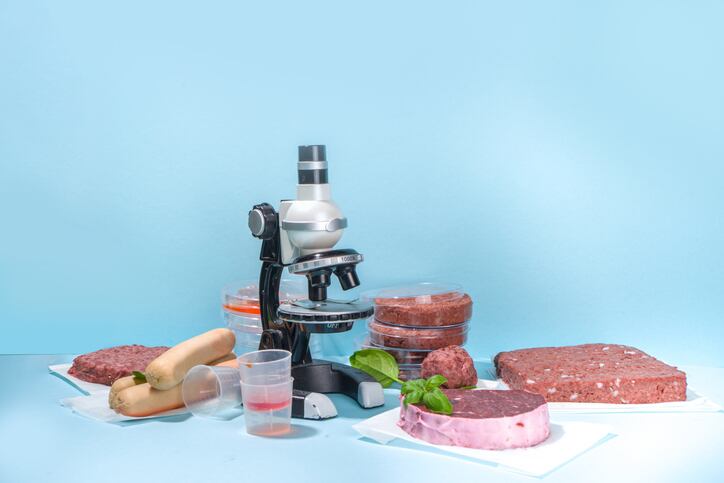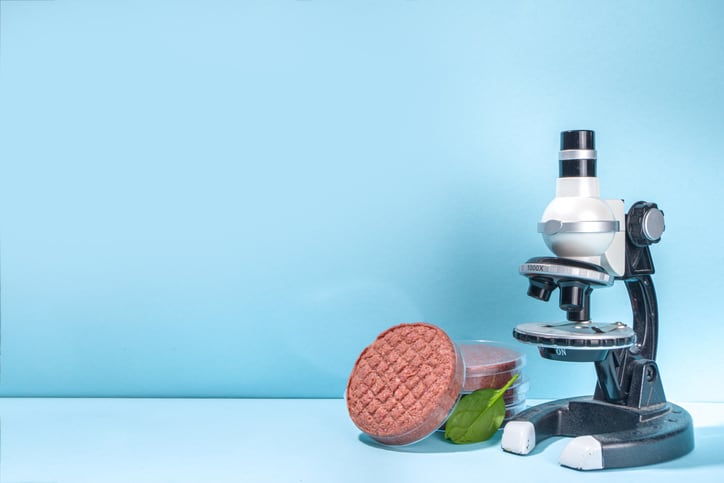The world's first lab-grown burger was cooked and eaten at a London news conference back in 2013. That milestone was pioneered by scientists from the Maastricht University in the Netherlands.
The cell-based meat (also known as cultivated, cultured or lab-grown meat) industry has since grown to more than 100 companies across six continents, backed by over EUR1.78 billion in investments, each aiming to produce cultivated meat products as a solution to the much-publicised negative effects of intensive livestock on the environment.
Dozens more companies have formed to create technology solutions along the value chain. The sector is expected to continue to expand after the FDA’s November 2022 decision to declare cultured meat declared safe to eat. This came after the starting pistol for the lab-grown meat market was fired when the Singapore Food Agency approved the commercial sale of a lab-grown chicken product in December 2020. As the industry grows so do its hopes of soon becoming become economically viable.
In the UK meanwhile there have been complaints that the EU’s novel food regulations – which have been retained in UK law post-Brexit – means the country risks falling behind those places where regulators have begun approving lab-grown meat. The free-market thinktank the Institute of Economic Affairs, for one, is urging the government to create a more favourable regulatory regime for lab-grown meat innovation and take advantage of an opportunity it estimates could add £2.1 billion to the UK economy by 2030.
In this context comes the announcement, a decade since that famous patty was fed to food critics in the UK capital, that a team of British scientists have produced what they claim is the world’s first 100% cultivated pork steak.
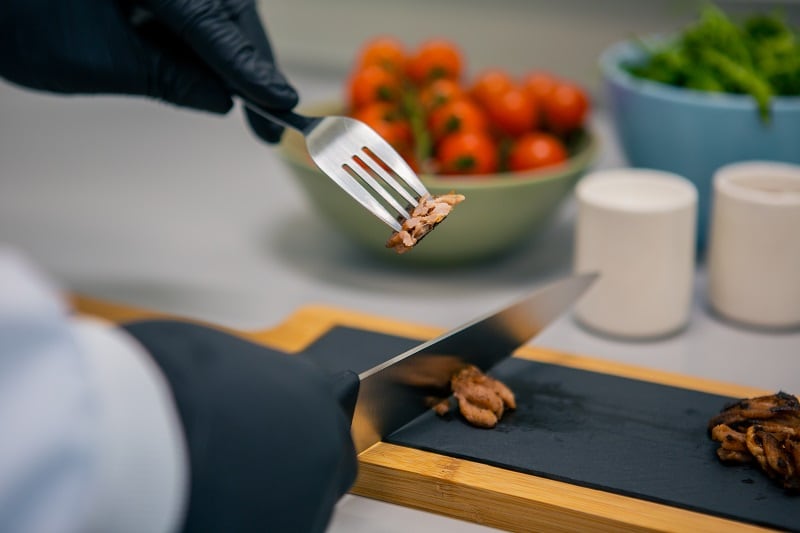
The breakthrough was achieved by 3D Bio-Tissues (3DBT), a Newcastle-based tissue engineering company. The steak fillet was entirely made from pork cells and measured 9 cm in width, 4 cm in length and 1 cm in height, making it the same size and shape as a small fillet of traditional pork meat. The fillet was also said to replicated pork’s flavour and texture.
Other companies outside the UK have developed cultivated steaks. Israel’s Aleph Farms was the first to create cellular minute and rib-eye steaks. In the UK, meanwhile, cultivated meat developer Ivy Farm has already officially opened a cultivated meat pilot plant that it claims is the largest of its kind in Europe.
So, what’s unique about 3DBT's breakthrough? It’s all about structure, it told FoodNavigator.
Putting it very simply, cultivated meat is made by getting cells from an animal and growing them into a final product in a bioreactor. Depending on the cell type, this is sourced from a small piece of tissue taken from a live animal or gotten from a cheek swab or blood draw. Whilst in the bioreactor, the cells are fed a culture medium – containing basic nutrients such as amino acids, glucose, vitamins, and inorganic salts, and supplemented with proteins and other growth factors. There also needs to be a scaffolding structure inside the bioreactor for the cells to form into the different parts of meat: skeletal muscle, fat, and connective tissues etc.
Cultured meat start-ups will often use a plant-based scaffold. According to 3DBT, what’s then created isn’t meat in the true sense, but what might be called a slurry of cells that have not yet differentiated and matured into tissue. Added to this might be extruded vegetable protein to create a meaty texture which is then crafted into a meat product. This will no doubt taste and look like meat. But it’s better described as a hybrid product.
3DBT’s breakthrough was in creating a ‘structured’ product as opposed to an 'unstructured' one like meat balls or mince, explained 3DBT’S Chief Executive Officer, Dr. Che Connon. "The point of difference here is that we are creating a structured product for the first time that allows us to create a whole cut fillet.”
The breakthrough has been assisted thanks to the fact 3DBT is a tissue engineering company that is already producing human corneas to help restore vision to people. Via the same process it uses to make skin and human organs such the cornea, the company has been able to employ ‘structure without scaffold’ technology that is helping to make cultivated meat that more closely resembles traditional meat in every respect without the need for plant-based additives.
The process
3DBT used pig cells to produce the cultivated pork fillet. The process of producing the fillet began by extracting cells from a pig and putting them in a cell-culture environment, which allowed them to grow and divide. The cells were then cultivated using the company’s proprietary structured meat technology. Key to this, said Connon, is a tissue templating process that replicates the natural alignment of cells and gives the meat that’s produced an accurate “bite, mouthfeel and texture”.
The company also uses a patented cell booster called City-mix, which enhances the growth of cells and tissues to the point that the need for a scaffold is eliminated. “It works by increasing the number of cells but also the yield of total tissue mass,” explained Connon. “It's allowing you to use growth factors at much lower concentrations.” It therefore enables the reduction of the use of expensive growth factors whilst increasing yield of cultivated meat. "Cell-culture medium makes up over 80% of the overall cost of production," said Connon. "Reducing that cost goes a long way to making commercial sense at scale."
3DBT’S cultivated pork fillet took a month grow. Cultivated meat players are typically taking 45 days to make a product. “We've been working on this for 15 years,” Chief Executive Officer, Dr. Che Connon told FoodNavigator. "No one's been able to do what we've done."
He continued: "We are talking about unstructured versus structures. The current technology that has been rolled out is based on fermenters creating large a number of cells which are then added to a scaffold. Without the scaffold, you end up a mush or a paste that doesn't really resemble anything like meat."
"Our process is different because it is mimicking how meat is grown inside the animal. And this means you're getting not just cells but the structural component of that meat. And that structural component makes up 90% of meat. You could say everyone is making 10% of the meat, which is the cells. We're making 100% meat."
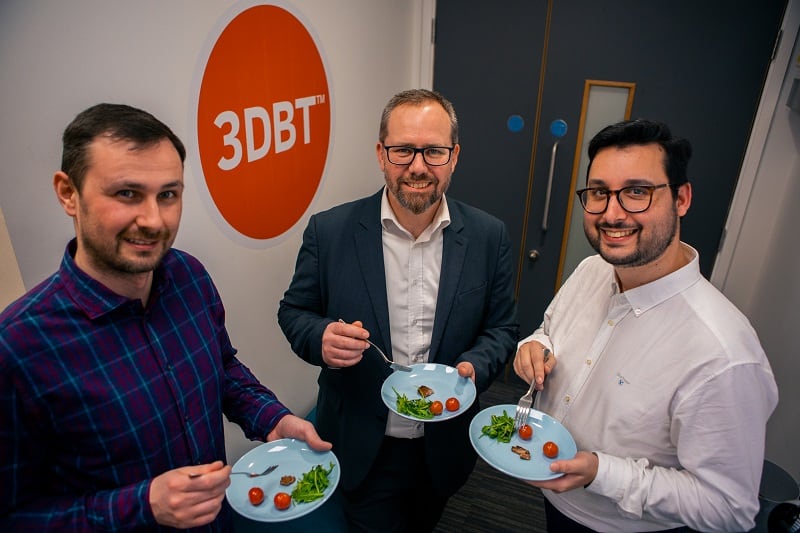
3DBT’s duel promise of making cultivated meat that more closely resembles traditional meat, together with a growth supplement it says will greatly reduce the cost of cultivated meat, has attracted support from the Good Food Institute, a non-profit advocating a switch to alternative proteins.
Seren Kell, science and technology manager at the Good Food Institute Europe, told FoodNavigator: “Cultivated meat companies often use scaffolding elements on which cells are able to grow, enabling them to create sophisticated products with the same complex texture and mouthfeel as conventional meat.
“3DBT's innovation means they’ve been able to produce a scaffold that is itself made from cells, producing a 100% cultivated meat steak – rather than a hybrid product using a plant-based scaffold – and developing an even more efficient production process.”
“3DBT was one of the winners of our Innovation Challenge with EIT Food, aimed at slashing the cost of cell culture media – one of the most significant barriers to commercialising cultivated meat.
“Their unique approach – using a formula synthesised from agroforestry byproducts – showed fascinating potential to overcome this obstacle. As this sector advances at breakneck speed in the wake of the recent FDA decision in the US, this latest announcement demonstrates the vital contribution European startups are continuing to make in the journey to bring cultivated meat ever closer to our dining tables.
“To enable companies to build further on developments like this, scale their production process and bring the benefits of cultivated meat to Europe, it is essential that governments invest in open-access research and vital infrastructure.”
3DBT is not focussed on becoming a brand. Instead, it wants to supply its technology and growth medium ingredient to cultivate meat companies. “We look forward to taking the findings through to the next stage of development, focused on producing a chef-ready product for public consumption,” added Connon.


